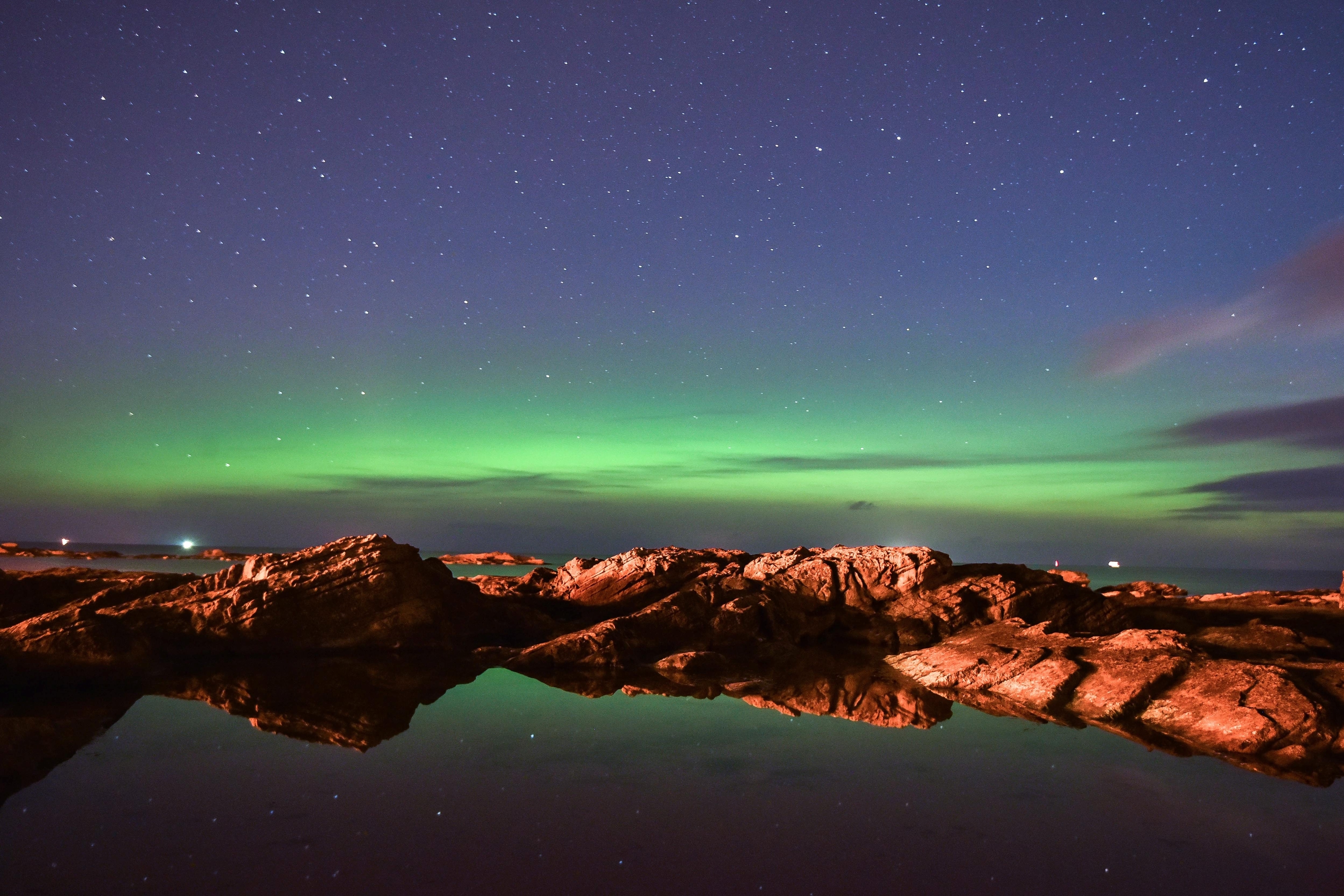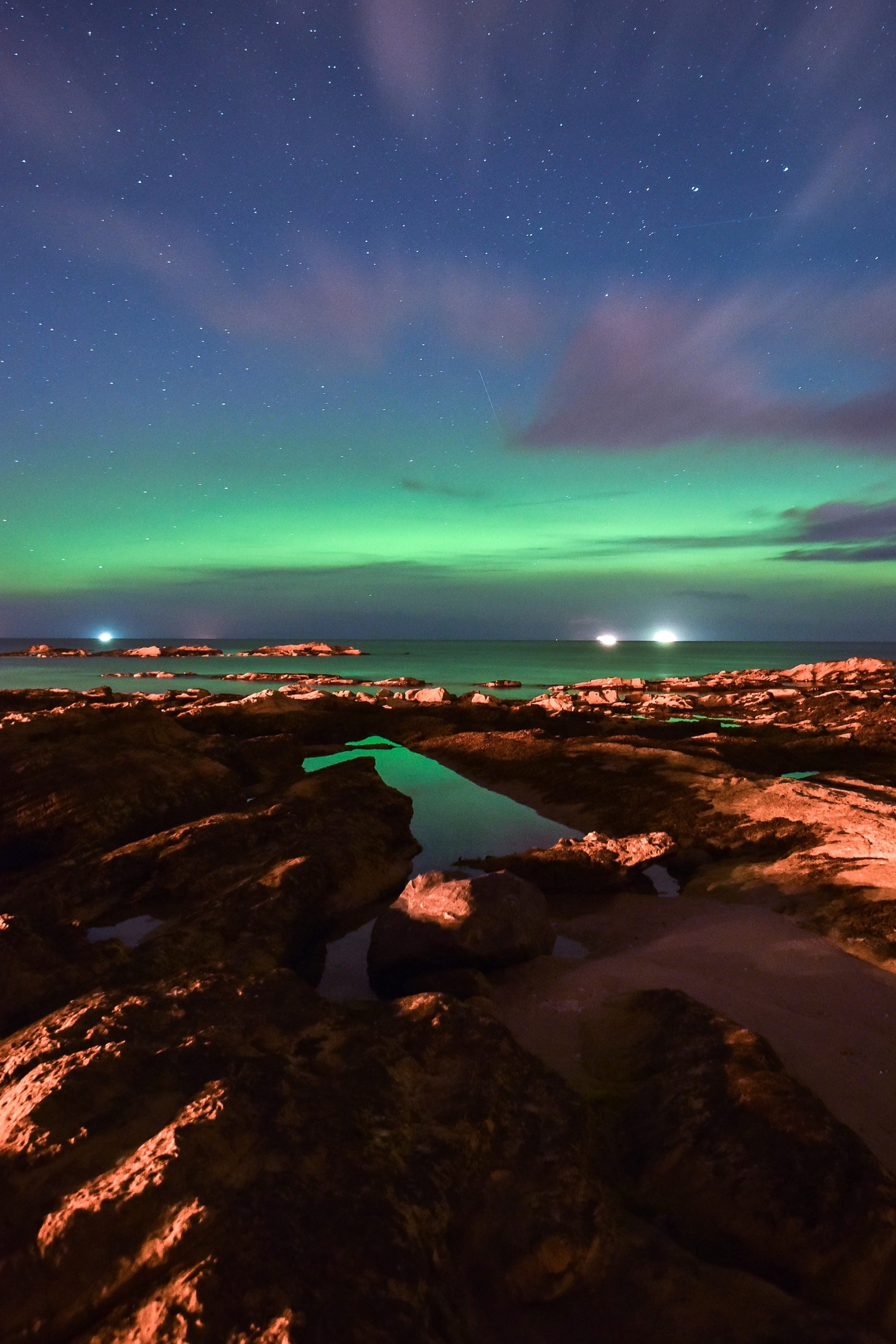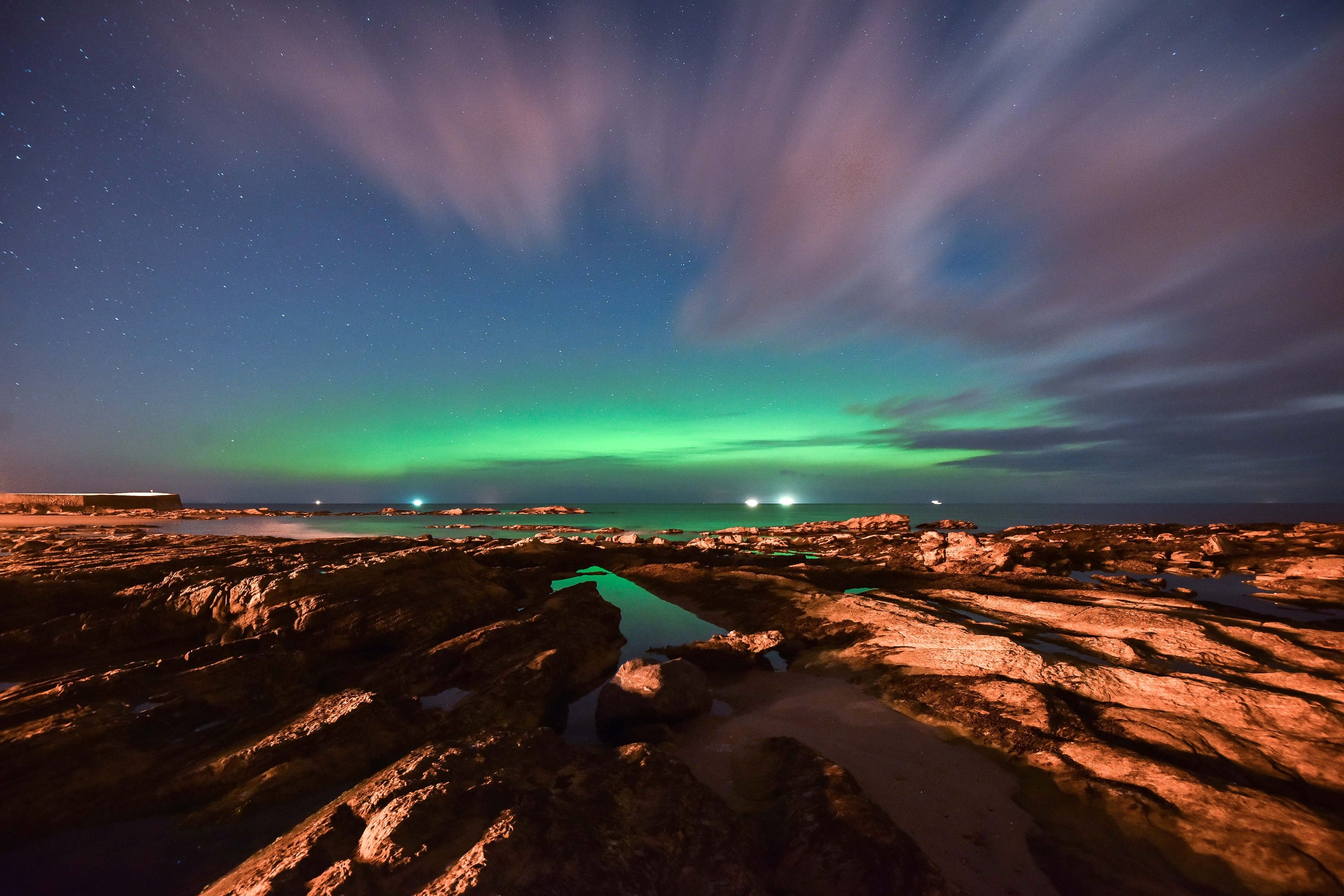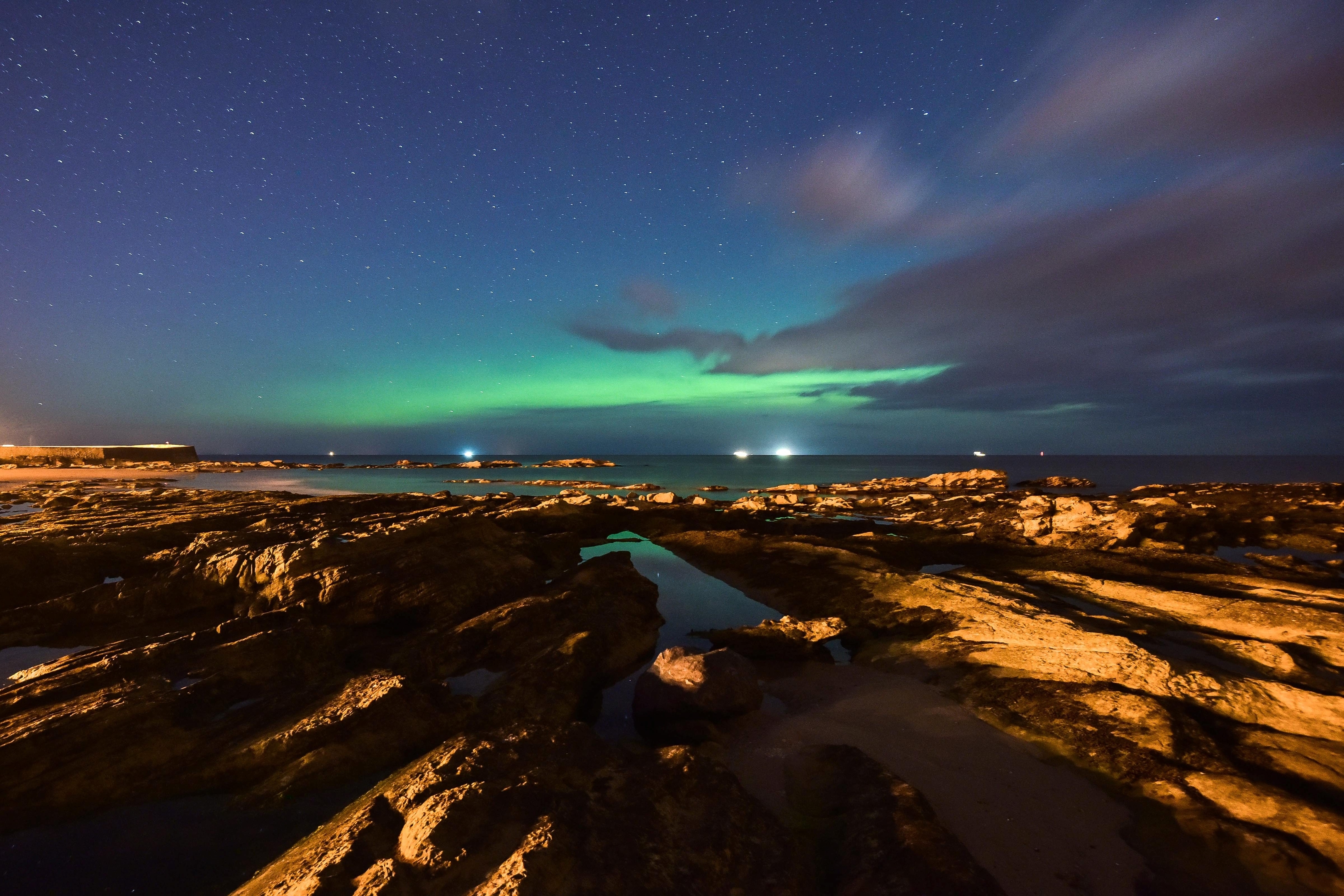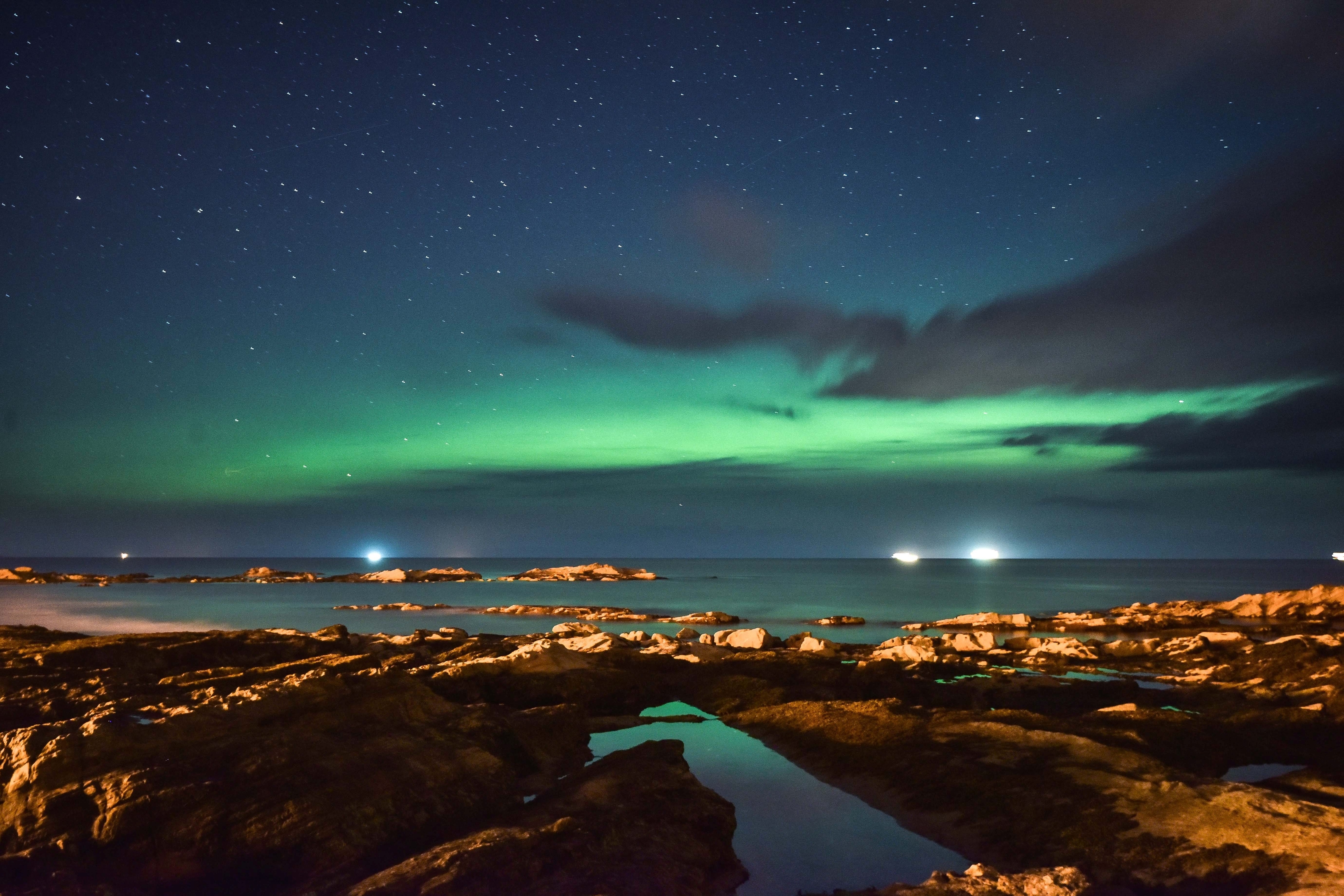The Northern Lights, Aurora Borealis, are reflected in rock pools on the beach in Hopeman, Moray during a display on October 6.
Here are some things to keep in mind when shooting the northern lights:
Deactivate the camera flash and automatic settings.
Always shoot RAW format – it will give you the most data to work with later. …
Focus manually to infinity.
Open up the lens aperture.
Compose your shot.
A camera with interchangeable lenses will be best, but in principle any camera can be used.
The bigger the imaging chip in it, the less grainy the pictures will be.
Lens: A wide-angle lens is best, preferably with a focal length between 10 and 24 mm and a maximum aperture of f/2.8 (but f/3.5 will do at a pinch).
Manual focus adjustment is a must.
Sturdy tripod: To avoid blurring of the picture from camera movement.
A good head which allows independent adjustment of each axis will be best.
If your tripod is unstable, try hanging something heavy from the centre column.
Remote trigger: A cable release fitting your camera will be invaluable in reducing the vibration.
It can be used in addition to or instead of the trigger delay timer, built into most cameras today. If you don’t have a remote trigger, use the the trigger delay instead.
Memory cards: Always bring extra memory cards, if you can. A faulty card can completely ruin an otherwise excellent trip.
Spare batteries: The cold drains batteries very quickly, so remember to bring fully charged spares and keep them in your pocket, close to your body, until you need them.
